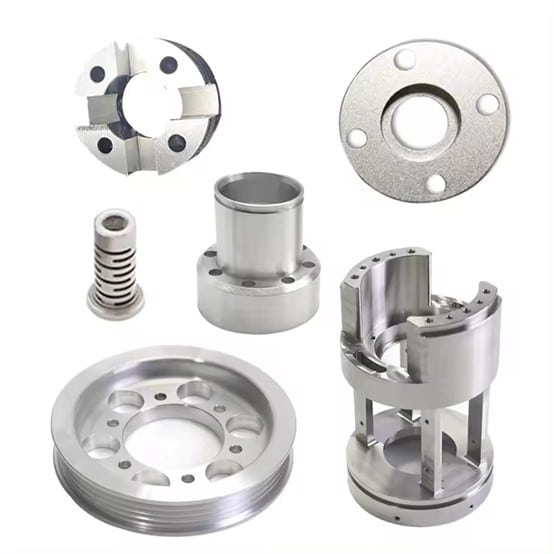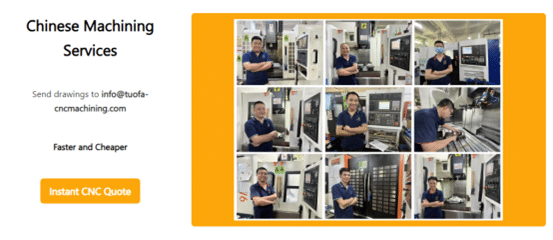6061 aluminum alloy is a popular choice for CNC machining due to its versatility, strength, and corrosion resistance. It finds applications in various industries, from aerospace and automotive to consumer goods. The temper designation, such as T6, T651, or T6511, significantly influences the alloy’s mechanical properties and suitability for specific applications. This guide delves into the differences between 6061 T651 and T6511, with a focus on their machinability, to help you make informed decisions for your precision machining projects.
If you want to know: Aluminum 6061 T6 vs T651 vs T6511 vs: Which is Aluminum Alloy Better, I think this can also help you make a better decision when choosing Aluminum materials in CNC machining projects.
Unraveling the 6061 Aluminum Alloy: A Versatile Powerhouse
6061 aluminum alloy is a workhorse in the world of manufacturing, renowned for its balanced combination of strength, machinability, and corrosion resistance. Let’s explore what makes this alloy so versatile.
Composition and Properties: The Building Blocks of 6061
The 6061 alloy’s unique properties stem from its specific blend of elements:
| Element | Percentage Range (%) | Role |
| Aluminum | 95.8 – 98.6 | Base metal, provides lightweight and corrosion-resistant properties. |
| Magnesium | 0.8 – 1.2 | Enhances strength, hardness, and weldability. |
| Silicon | 0.4 – 0.8 | Improves castability, reduces shrinkage, and enhances fluidity during casting. |
| Iron | 0.7 max | Increases strength but may reduce corrosion resistance at higher levels. |
| Copper | 0.15 – 0.40 | Improves strength and machinability. |
| Other | Trace amounts | Manganese, chromium, zinc, and titanium may be present in small quantities, influencing specific properties. |
These elements work together to create a material that is:
- Strong: Offers a good balance of strength and ductility, making it suitable for structural applications.
- Corrosion-resistant: Forms a protective oxide layer that resists corrosion in various environments.
- Machinable: Exhibits excellent machinability, making it ideal for precision CNC machining processes. Ready to choose the perfect 6061 aluminum alloy for your precision machining project? Tuofa CNC Machining’s experts are here to guide you. Contact us today for a personalized consultation and let us help you achieve optimal results. Get machining quote in China.
Common Applications: Where 6061 Shines
The versatility of 6061 aluminum alloy makes it a popular choice for a wide range of applications across various industries:
- Aerospace: Structural components, frames, and fittings for aircraft and spacecraft.
- Automotive: Wheels, chassis components, body panels, and heat sinks.
- Marine: Boat hulls, masts, rigging, and other marine hardware.
- Construction: Architectural structures, railings, handrails, and brackets.
- Consumer Goods: Bicycle frames, camera lenses, electronics enclosures, and sporting goods.
Aluminum Tempers: The Art of Heat Treatment
Aluminum tempers are designations that indicate the specific heat treatment a particular alloy has undergone. These tempers significantly influence the mechanical properties of the material.
Temper Designation System: Decoding the Alphabet Soup
The Aluminum Association (AA) has established a standardized temper designation system:
- F: As-fabricated (no heat treatment)
- O: Annealed (softened by heating and slow cooling)
- H: Strain hardened (strengthened by cold working)
- T: Thermally treated (strengthened by a combination of heat treatment and natural or artificial aging)
Impact on Properties: The Power of Tempering
Tempering significantly influences the mechanical properties of 6061 aluminum alloy:
| Temper | Process | Tensile Strength (MPa) | Yield Strength (MPa) | Elongation (%) |
| T4 | Solution heat-treated and naturally aged | 186 | 83 | 16 |
| T6 | Solution heat-treated and artificially aged | 290 | 241 | 12 |
| T651 | Solution heat-treated, stress-relieved by stretching, and artificially aged | 290 | 241 | 12 |
| T6511 | Solution heat-treated, stress-relieved by stretching, and artificially aged, then stress-relieved again | 290 | 241 | 12 |
As you can see, the T6, T651, and T6511 tempers offer significantly higher strength and hardness compared to the T4 temper. However, the elongation (a measure of ductility) decreases with increasing temper.
T651 vs. T6511: A Head-to-Head Showdown
While both T651 and T6511 share similar tensile and yield strengths, the key difference lies in the additional stress-relieving step in the T6511 temper. This subtle distinction has significant implications for machinability and dimensional stability.
T651 vs. T6511 Heat Treatment Process: The Defining Difference
The primary difference between T651 and T6511 lies in the heat treatment process. Both tempers involve solution heat treatment and artificial aging, but T6511 includes an additional stress-relieving step by stretching the material.
Heat Treatment Differences
The primary difference between T651 and T6511 lies in the heat treatment process. While both tempers undergo solution heat treatment and artificial aging, T6511 incorporates an additional stress-relieving step. This step involves controlled stretching of the material to reduce internal stresses, resulting in improved dimensional stability during machining.
| Heat Treatment Step | 6061-T651 | 6061-T6511 |
| Solution Heat Treatment | ✓ | ✓ |
| Quenching | ✓ | ✓ |
| Artificial Aging | ✓ | ✓ |
| Stress Relieving (Stretching) | ✓ |
Mechanical Properties
The stress-relieving step in T6511 results in slightly lower strength but improved dimensional stability compared to T651:
| Property | 6061-T651 | 6061-T6511 |
| Tensile Strength (MPa) | 310 | 290 |
| Yield Strength (MPa) | 275 | 240 |
| Elongation (%) | 12 | 16 |
| Brinell Hardness | 95 | 85 |
Stress Relief and Machinability
The stress-relieving step in T6511 significantly reduces internal stresses within the material. This reduction in stress leads to improved dimensional stability during machining, minimizing warping and distortion.
Machinability in Focus: T651 vs. T6511
Machining Characteristics
Both T651 and T6511 exhibit good machinability, but T6511’s stress-relieved state offers some advantages:
- Reduced Warping: T6511 is less prone to warping during machining, resulting in more precise and dimensionally stable parts.
- Improved Surface Finish: The reduced stress in T6511 can lead to a smoother surface finish.
- Longer Tool Life: The consistent material properties of T6511 can extend tool life.
Cutting Parameters
The following table provides recommended cutting parameters for both T651 and T6511:
| Parameter | 6061-T651 | 6061-T6511 |
| Cutting Speed (m/min) | 150-250 | 180-300 |
| Feed (mm/rev) | 0.2-0.4 | 0.25-0.45 |
| Tool Material | Carbide | Carbide |
Choosing the Right Temper: T651 or T6511?
The choice between T651 and T6511 depends on your specific application requirements:
- T651: Suitable for applications where maximum strength is a priority and dimensional stability is less critical.
- T6511: Ideal for precision machining applications where dimensional stability, tight tolerances, and minimal warping are essential.
Consider the following factors when making your decision:
- Required Strength: T651 offers slightly higher strength than T6511.
- Dimensional Stability: T6511 excels in dimensional stability due to stress relieving.
- Tolerance Levels: T6511 is preferred for tight tolerances and intricate parts.
- Cost: T6511 may be slightly more expensive due to the additional stress-relieving process.
The Role of CNC Machining in Aluminum Alloy Manufacturing
CNC machining plays a crucial role in manufacturing precision parts from 6061 aluminum. It offers high accuracy, repeatability, and the ability to create complex geometries. Tuofa CNC Machining specializes in machining 6061 aluminum, leveraging our expertise and advanced equipment to deliver high-quality components.
Beyond Strength: Additional Considerations for Material Selection
Cost and Availability
While both T651 and T6511 are readily available, T6511 may be slightly more expensive due to the additional processing involved in stress relieving.
Corrosion Resistance
6061 aluminum offers good corrosion resistance, and temper does not significantly affect this property. However, specific surface treatments or coatings may be applied to enhance corrosion protection in harsh environments.
Conclusion: Making Informed Decisions for Optimal Results
Understanding the differences between 6061 T651 and T6511 aluminum alloys is crucial for selecting the right material for your precision machining projects. By considering factors like strength, dimensional stability, tolerances, and cost, you can make informed decisions that lead to optimal results.
Tuofa CNC Machining is your trusted partner in navigating the complexities of aluminum alloy selection and precision machining. Contact us today for expert consultation and to discuss your specific project requirements.




